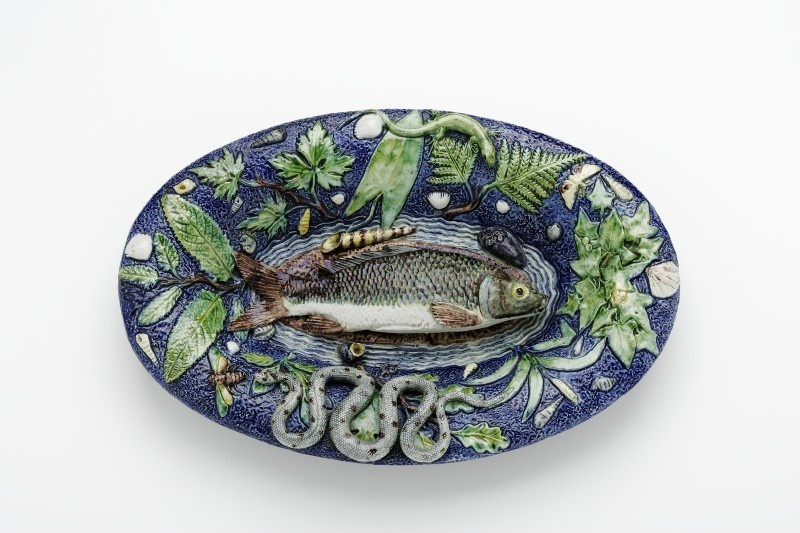Der französische Töpfer und Naturforscher Bernard Palissy (um 1510 - um 1590) führte (ab etwa 1556 mittels Naturabgüssen) als erster die Imitation von Kleingetier und Pflanzen in die keramische Kunst ein. Noch im 16. und 17. Jahrhundert häufig nachgeahmt, fand der bewunderte Meister in der 2. Hälfte des 19. Jahrhunderts in Frankreich, aber auch in England erneut eine reiche Nachfolge. Die auf großen zeitgenössischen Ausstellungen präsentierten Keramiken im Palissy-Genre beeindrucken durch die Detailgenauigkeit der Abformungen wie durch die naturalistische Palette der Emailglasuren.
Geschenk von Wilhelm oder Paul Kretschmann, Leipzig, 1874.
en

